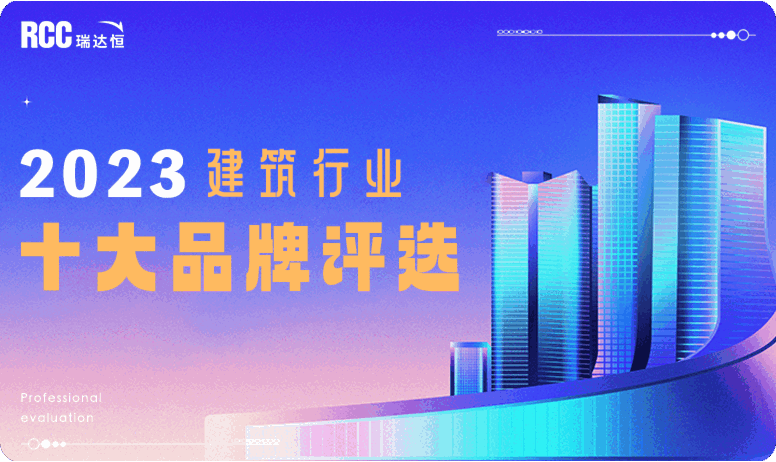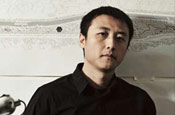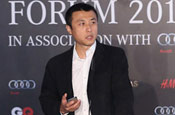李虎:城市中的自然之子
其他来源:顶好设计投稿 2019-09-04
今年四月,美国知名建筑评论人、策展人Michael Webb来访中国,并拜访了OPEN建筑事务所办公室,与OPEN创始合伙人李虎进行了一次深度对话。李虎在采访中讲述了自己在建筑实践上的感悟,OPEN近年来的重要作品,以及对于地球、城市、与建筑的未来的看法。以下为访谈节选。
清华大学建筑学学士,莱斯大学建筑学硕士,曾任斯蒂文·霍尔建筑师事务所合伙人,期间负责设计了北京当代MOMA、深圳万科中心、成都来福士广场等具有影响力的都市建筑作品……
李虎的履历令资历颇深的Michael也为之称叹。而OPEN建筑事务所自创立以来所创作的一系列绿色可持续的艺术与教育建筑项目,更获得了Michael的高度评价。
01 维持“两支足球队”的理想规模
Michael Webb:开始自己的建筑事业之前,你在斯蒂文·霍尔事务所工作了十年。能介绍一下你曾经参与过的项目吗?
Michael Webb: You were working for Steven Holl for ten years before you set up OPEN Architecture. Could you just mention a few of the projects that you worked on with Steven?
李虎:我从2000年到2010年为斯蒂文工作,后五年担任公司的合伙人。期间参与了很多项目和竞赛,记得第一年我参加了五个竞赛。总的来说,我参与度较高的项目有纳尔逊·阿特金斯艺术博物馆、爱荷华大学艺术学院、瑞士大使馆新所。
Li Hu: I worked with Steven from 2000 to 2010. I became the partner at the firm in the second half five years. We worked on too many projects, many many competitions in the begin years. I remember I worked on five competitions the first year. At the same time, we worked on some of the projects that ran over the years like The Nelson-Atkins, the School of Art at Iowa University, Swiss embassy. These are the projects that I was more heavily engaged.
.jpg)
堪萨斯城纳尔逊·阿特金斯艺术博物馆 ©Andy Ryan
自2003年起,我们开始挑选项目,并有机会受矶崎新邀请参与南京的四方美术馆项目,同时在北京启动了当代MOMA项目。MOMA开始建设后我频繁来到中国,这个时候我意识到需要在这里设固定点,因为我深受往返旅途的劳顿折磨。
我在2006年搬回了北京,然后开始了另外两个大规模的项目:深圳万科中心,一座水平摩天大楼;以及我们合作的最后一个项目,成都来福士。整个过程大致如此。到2010年底,我们友好分开了。
Since 2003, we started to pick out the work and had the opportunity (from the invitation of Isozaki) to work on the project in Nanjing (Sifang Art Museum). At the same time, (we) began the project Linked Hybrid in Beijing. And then later, I moved to China. When Linked Hybrid started construction, it was the time I realized we need a presence here because the travel was killing me anyway. That shuttle bus back and forth, like space shuttle (laughter). So I said, Steven, we got to set up something. So I moved back to Beijing in 2006. And then we started two more very large-scale projects: the Vanke Center and the Horizontal Skyscraper. The last one that we worked on together would be the Raffles City in Chengdu. And at the end of 2010, we were just happily departed.
.jpg)
深圳万科中心 ©Steven Holl Architects 摄影/舒赫
Michael Webb:参与这些高水平的建筑项目真是令人难以置信的经历。当你刚开始自己的事业时,项目规模是不是非常小?
Michael Webb: That was an incredible experience. You’ve worked on some of the best buildings I know. So when you set up your own practice, was it quite small to begin with?
李虎:是的,和多数创业者一样,我们从赢得竞赛开始起步。最初只有几个人,后来以10个人的规模持续了一段时间。斯蒂文总是说,理想的事务所规模应该是一支足球队,你是教练, 带领10-12个顶级的队员。
现在我和我的妻子搭档,我们已经发展到了两支足球队,也还是在理想的规模内。我认为关键在于如何保持这种状态。
Li Hu: Yes, as always. We began by winning a competition, that's the Garden's school. So we were small, few people, and later we were 10 people for a while. Steven always says you know the ideal office size is a football team. Right? Like you are the coach. Now I work with my wife, so we grow into two football teams, but it's still an ideal size. I think the point is about what to keep with that ideal size.
.jpg)
OPEN建筑事务所创始合伙人 李虎 & 黄文菁
02 为文化空间注入公众归属感
Michael Webb:我很好奇你如何经营小规模的团队。我知道一些非常有创意的建筑事务所里的人数很少,整个团队所有成员都拿出他们的最佳状态来工作,而且可以亲自参与所有的项目。
你完成了许多不同类型的优秀作品,例如上海油罐艺术中心,一个富有想象力的工业建筑改造再生项目。当第一次接触这个项目时,你的愿景是什么?
Michael Webb: It is interesting how much you can do with small offices. Some of the most creative architects I know still have very small numbers of people. Yet clearly they bring out the very best of all the people of the team members, and you can have personal involvement in all of the projects. (Li: Absolutely). And you've done an extraordinary diversity of projects. I'd like you to talk about a few of them. The tanks in Shanghai, very imaginative, adaptive reuse project to an industrial facility. What was your vision for these when you first approached them?
.jpg)
上海油罐艺术中心 ©OPEN建筑事务所 摄影/吴清山
李虎:油罐艺术中心是极具挑战性和特殊性的任务,探讨了我们一直在研究和热衷的话题。第一点,因为我热爱大自然,而环境危机让我深感困扰。因此,环保的概念始终贯穿我们所有类型的项目,无论大小尺度。
另外一点是我们一直专注于文化项目的设计:探索如何重塑公共文化机构和组织的形象,使它们能够更好地与社会共同发挥作用,变得更有影响力。我们不能仅仅复制,照搬过去。必须创造些什么。
Li Hu: Tank Shanghai is a very challenging and special mission to take. There are some topics that we have been consistently researching into and fascinated with while working here. First, I love nature. And the environmental crisis deeply troubles me. So that is a topic always threading through all of our projects, big, small, a wide diversity of works.
The other topic that we've been focusing, working on in lots of cultural projects, is trying to find out how does the image of a public cultural institution or organization can be reinvented to work better with the society in order to be more influential, more effective. What kind of new cultural facility do we need today? We can't just simply copy, take from the past. Something has to be reinvented.
.jpg)
改造前现场图 ©OPEN建筑事务所
.jpg)
改造后现场图 ©OPEN建筑事务所
所以,这个项目提供了几乎完美的机会。我们把旧的工业场地变成一个公园,利用大自然来改造场地,很自然地与城市建立起连接。人们不仅仅是为了看艺术而去,还有很多人去慢跑和野餐。艺术建筑在中国这个特殊背景下呈现出一种截然不同的转变。
不同于我们所知的著名艺术文化建筑,如卢浮宫、古根海姆、现代艺术博物馆、泰特现代美术馆,他们有自己的财务机制来支持自身的运作,在中国却不是这样的。
So Tank provides that almost perfect opportunity. We turned the old industrial site into a park, using nature to transform the site, and by doing that, you naturally establish a different kind of connection with the city.
Unlike the more famous things we know, like the Louvre, Guggenheim, MoMA, and Tate Modern, that I'm sure having their own financial mechanism to support the operation. In China, this is not quite happening.
.jpg)
.jpg)
上海油罐艺术中心 ©OPEN建筑事务所 摄影/吴清山
这解释了为什么我们一直试图通过设计以及不同类型的功能策划来填补这个空白,创建一个更平衡的功能组织,而不只是艺术。
首先,为了容纳多样化的艺术形式,空间必须足够灵活到能够接受非传统的方式。其次,我们尝试注入一些利润空间如餐馆和商店,来帮助平衡艺术机构非营利的特性。
This explains why we've been trying to introduce a different kind of programming and to fill that gap through design. In this way, you could create a more balanced program, not just art.
First, space has to be flexible enough to take on something unconventional. And secondly, we tried to inject, introduce a profit-making space like restaurants, shops, that trying to help to balance that non-profit nature, which is also the initial mission of an art institution.
.jpg)
.jpg)
teamLab展览「油罐中的水粒子世界」©teamLab
总的来说,就是基于以上两个维度,通过设计重塑公共文化机构。从这个层面上来说,我认为我们作为建筑师很幸运,可以在项目的策划阶段去争取更多的自由和可能性,而不是被动地接受已有的要求。
To conclude, those are the two dimensions we took on to reinvent a public cultural institution through design. For that reason, I do think we are lucky as architects (of course you have to fight for that) to get the kind of freedom and possibility in that phase of the project, not just accept what was given or asked to do.
03 消隐于沙丘之下的生态庇护所
Michael Webb:我认为油罐艺术中心的一个吸引点在于,它是具有巨大潜力进行重新组织的工业空间。另外一个项目沙丘美术馆,以独特的方式建造出面向天空和大海的开阔场域,犹如一个天然洞穴。
能否谈谈你从发现空间走向创造空间的过程?因为在这个过程中你好像建立了与自然的不同联系。
Michael Webb: One thing that I think fascinating is, going from the Tanks which are industrial spaces that have huge potential for reconfiguration inside, utilizing in very different ways, to museums like the Dune Museum which is opened to the sky and the sea. It really does feel where you've created the space is always like a natural cave. And I'd love you to talk about the way that you go from finding a space to creating a space, and as it were, create a different bond with nature.
.jpg)
UCCA沙丘美术馆 ©OPEN建筑事务所 摄影/吴清山
李虎:当然。沙丘美术馆和油罐艺术中心恰恰相反,它的场地在一个除了沙滩,周围什么都没有的地方。但是我们拥有可以在这片天然的沙滩为美术馆选择场地的自由。
我们在那发现的最特别的东西就是沙丘。那个沙丘,我们到了项目的最后才发觉,幸运地成为了少数几个未被破坏的沙丘之一。
Li Hu: Sure. Now the Dune is just the opposite of a tank in a way that we began with nothing. And it's the opposite nature of the site as well, that you're all in the middle of nowhere right under the sand beach. But at the Dune, we did have the freedom to choose a site around that area of the natural beach. That we discovered something special (which) was the Dune. That Dune as we discovered much later, almost at the end of the project, is luckily one of the few remaining undestroyed dunes.
在其他许多国家,沙丘都是自然保护的一部分,不能破坏。但是中国的沙丘并没有得到善待,人们从来都不太了解沙丘的定义,包括它的重要生态功能——保护非常脆弱的海洋生态。
但我脑袋里产生了一种直觉,说:好,如果要做一个小艺术空间,就不能只是放在沙滩上的建筑。它必须属于那里,与场地形成一种深层次连接,无法移动到任何其他地方。因此我们立刻想到要在沙丘里做点什么。
Li Hu: Dune in many other countries is part of natural preservation. You can't destroy. But dune in China is not preserved. People never quite understand what dune is for. People do not really understand the important ecological function of the dune - to protect the very vulnerable ocean ecology. But I find in an instinct that if we were going to do a little museum, a little art space, I don't want to do something just sit there on the beach. It has to belong there, and we need to find a deep connection to the site. You know it's like bonding with the site. It belongs to (the site and) you can't move somewhere else. So I immediately thought about doing something in the dune.
.jpg)
.jpg)
UCCA沙丘美术馆 ©OPEN建筑事务所 摄影/吴清山
Michael Webb:而且你创建的这个建筑物,包含三到四个自然元素的声学容器,并成为景观中不可或缺的一部分。因此,它实际上融进了地景中。
在另一个正在构思的项目中你走得更远——山谷音乐厅。可否谈一谈这个项目,因为对我而言,这是存在于野外自然景观中的一个非常迷人的建筑典范。
Michael Webb: And you created a building that incorporates three or four natural elements as sounding modifier, and made it an integral part of the landscape. So it is actually being part of the integral part of it.
And you've gone even further in a project that is not completed now, the Chapel of Sound. That to me is fascinating as the example of architecture in a really wild natural landscape.
.jpg)
山谷音乐厅 效果图 ©OPEN建筑事务所
04 在“原始洞穴”中聆听天籁之音
李虎:是。那里甚至不是乡村环境,而是纯粹的自然。对于我们建筑师来说,大多是在城市工作。当客户要求我们设计一个野外的音乐表演空间时,这成为了难得的机会来做些事情。
我们被要求创作一个户外剧场,这也是设计任务的一部分。因为这些场景空间并不经常被使用,所以如果做成室内剧院将会需要非常昂贵的维护。这是非常聪明的功能策划。
Li Hu: Yes. these are not rural conditions but completely natural sites. And for us as architects (who) mostly work in the city, this offered a rare opportunity to do something as the Chapel of sound. The client asked us to design a space for music performance which is also, as a part of the mission calling for, an outdoor theater because the scenes are not always used. If you do an indoor theater, it will be very expensive to maintain. So it is a very smart program.
.jpg)
山谷音乐厅 效果图 ©OPEN建筑事务所
记得我在莱斯大学上学的时候,曾读过马歇尔·麦克卢汉的著作《媒介即信息》。至今我仍然记得,麦克卢汉谈论了视觉空间和声学空间,他的观点让我很着迷。
如果从文艺复兴时期开始,我们就都会使用透视塑造视觉空间,那么什么样的声音通过何种方式塑造了空间?所以山谷音乐厅真的是一系列实验。这是为声音创造的空间,用于不同类型的声音行为,关于声音如何反射,如何回响,如何成为一个信息导体。
I remember when I was in school at Rice, in one of the seminars, I started reading Marshall McLuhan’s book the medium is the Message. There was one thing that I still remember today, that McLuhan mentioned visual space and acoustic space, and that fascinated me. If from Renaissance we’ve been all the time working with visuals, perspectives, what kind of sound shapes space? So, the Chapel of sound is really experiments. That is a space created for sound, for different kind of behaviors of sound. How is sound reflected, reverberated, and converted?
我们研究了所有声音设备、乐器、乐器内部的样子,作为项目的灵感来源。比如小提琴的内部结构,还有人耳的结构。更不用说研究其他自然中的事物,例如贝壳。所以在山谷音乐厅中,设计实验是与无形的东西一起工作——即声音。
At the very beginning of the project, we looked for inspirations from all the sound devices, instrument, music instruments, what the music instrument looks like inside, for example, the inside structure of the violin and the structure of an ear. Of course, not to mention things in nature like seashells. So there is always something about the sound. So in the Chapel of Sound, the experiment is working with invisible things. That is sound.
.jpg)
山谷音乐厅 效果图 ©OPEN建筑事务所
Michael Webb:你用粗糙的混凝土材料创造了一个像天然岩石的建筑结构,并创造了一个人造洞穴可供进行表演。而且我设想有自然的声音进入,如鸟儿或风的声音。所以它是人造和自然的融合。这个项目比沙丘美术馆还要更进一步,在这个除了一个小村庄没有任何人类痕迹的纯粹的野外场地,更加与自然融为一体。
Michael Webb: And you created a building or structure that looks like a natural rock with very rough concrete and in a way created a man-made cave, within which performances can take place. And I assume there are natural sounds coming in, sounds of birds, sounds of the wind. So it's a fusion of man-made and natural. And it takes even the stage further than building itself you really are totally in harmony with nature, in the middle of a wild mountainous landscape with a village close by, otherwise no human habitation.
这个作品是一个迷人的“背离”,因为你是大城市的孩子,已经在城市做了许多重要作品,也热衷于城市规划。所以我说这是一个“背离”,或许可以补充你在城市中所做的事情,然后将你与大自然的接触引入并融入你的城市设计中。
This is a fascinating departure from the fact that you are the child of the big city as you've done many of your most important works in big cities and you have a fascination with urban planning. So it's a departure which perhaps complements what you are doing in the city, you know your contact with nature can then be imported and incorporated into your urban designs, such as the urban design in Shenzhen.
李虎:我在城市长大,我并不相信城市承载着如此人口庞大的国家的未来的希望。我热爱大自然。我爱城市且我在城市里工作的原因,是想建立一个更好的城市来保护自然。
当城市开始无休止地扩张蔓延,就会引向灾难,而这正在发生。城市之所以无节制地膨胀,是因为我们无法应对已有城市,转而去寻找其他地方,但最终制造出更多有问题、不快乐的城市。
Li Hu: You know I grew up in the cities. I'm not believed for such a big populous country, city host the hope for the future. The reason for that is I love nature. The reason I love city, and in the city, I want to build a better city is to protect nature. It will be a disaster if we start to sprawl, and that is happening. Why we sprawl? Because we can't deal with the cities. When you can't deal with a city when the city doesn't make people happy, people look for other places but what it ends up doing is create more problematic and unhappy cities.
.jpg)
山谷音乐厅 效果图 ©OPEN建筑事务所
所以这没有冲突:创建更好的城市是为了保护自然,在自然中工作也更好地回馈了人类。就像山谷音乐厅,它是一个声音的教堂,我们设想在里面办一场音乐会,就像教堂中的音乐会。
In the way, it is in no conflict working better cities about protecting natures and working in nature, it's also about working towards better humanities. Like in the chapel of sound is a chapel. We were asked to do a concert. I make it into a chapel.
Michael Webb:谈到教堂,你是指可以冥想祷告的空间吗?
Michael Webb: And by 'chapel', are you thinking of a space where you meditate?
李虎:这不是纯宗教的,但有一种精神因素,因为我想到在很早的阶段,音乐的发生总是与精神空间有关。就比如在西方,音乐产生在礼拜堂里,在圣主教大教堂里。即使在东方,音乐也发生在寺庙里。
我一直在寻找那些记忆中不朽的经典,可以超过时间成为永恒。我相信城市的原因,以及我们专注于文化项目的动力,都是因为我们试图创造一些永恒的东西。我想做出可以持久的项目和可以长久承载人们使用功能的空间。
Li Hu: It's not religious. But it's spiritual because when I think of music, where the music happens in the very early stage, it is always related to spiritual space, as happened in the West. It happens in the chapels, in the cathedrals, even in the East, it happens in the temples. So there is a spiritual connection.
So I'm always looking for that something eternal, or something classic, something timeless. And the reason I believe in cities and also the drive for us focusing on the cultural projects is trying to create some kind of timelessness. You know I want to work on the project that lasts, that hosts space for use by people.
05 打破传统学校的形态
Michael Webb:人类需要空间,而且需要绿色空间。我的意思是,这是一个非常基于人类天性的事情,如果没有它,我们会感到被困于幽闭恐惧症。
你将这种想法应用到了北京四中房山校区,那里的绿色屋顶是学校的一部分,并且整个建造空间都是开放的。你是否可以谈谈,如何将绿色空间化作城市建筑的一部分,并创造自然和人造共存的综合体?
Michael Webb: People need space and they need green space. I mean it's a very organic thing that without it people feel trapped, claustrophobic, and stifled. And you have applied that thinking to a school in the north of Beijing where green roofs are a visible part of the school and it is open in a build-up area. So talk about how you make greenspace a part of an urban building, and make it something where it is both natural and man-made in the same complex.
.jpg)
北京四中房山校区 ©OPEN建筑事务所 摄影/夏至
李虎:我们希望创造一种自由,让我们的孩子可以近距离地接触自然。这里我们当然是在谈论城市里的学校,如果场地本身在大自然里,这不会成为一个问题。
花园建成后,你环顾四周,会发现这个场地几乎成为唯一留下的绿色空间。我们在屋顶上创造的不仅仅是花园式的农场,学校真正在使用这个农场进行农业实践教育。学生们参与其中,就像课外活动。
Li Hu: We want to create a kind of freedom, to bring a closer connection for us with nature, for our kids to nature. Of course, we're talking about urban schools. If you're working on a school in nature that's not going to be an issue. What is interesting, when the garden was built and they look at how the surrounding site lays out, this almost become the only piece of green space left. And what we created on the roof is not just a garden, it’s a farm. And what's interesting, the school actually practices farming. The truth is the students are engaged and being part of that. That's like an extra curriculum.
.jpg)
屋顶田园麦收体验 ©北京四中房山校区
他们能够亲身经历自然的变化。自然的有趣之处在于万物生息,四季更替带来成熟果实,形成我们餐桌上的美味,这是一个自然循环的过程。
自然不仅仅是用来看的。虽然许多建筑师总是将大自然用作装饰,使它仅仅充当建筑的外观。但对我们而言,更多的是要建立自然与我们自身的联系。
They (students) see how things change. You know what's interesting about nature, is nature is different every moment, they're always growing, you see different seasons, you see how that (wheats) become the food in the kitchen downstairs. This is a cycle. Nature is not just for looking. Many architects are using nature always as a decoration, a skin job. But for us, it is really more about establishing its relationship with us.
.jpg)
北京四中房山校区 ©OPEN建筑事务所 摄影/夏至
Michael Webb:正如你所言,项目的开放性使其更具可持续性的价值。
Michael Webb: For having the openness that you just described makes it more sustainable.
李虎:我们的确运用了很多方法。在田园学校,我们在场地下面设有地源热泵,是为支持公共空间设置的地热井。在沙丘美术馆里也是如此,这种方法非常节能,帮我们省去了安设冷却塔。
Li Hu: Definitely in many ways. Yes. In the Garden School, we had the geothermal underneath the sports field. This is the geothermal wells that support all the main air-conditioning in the public space. In the dune as well. The dune has geothermal. That's why you see no cooling towers. It is very energy-efficient.
Michael Webb:因为即使在建筑物内部,实际上也是受气候控制的,所以需要恒温来保护艺术品。
Michael Webb: Because even in the buildings is actually climate controlled, you need that for protecting the art.
.jpg)
北京四中房山校区 ©OPEN建筑事务所 摄影/夏至
李虎:是的,如同画廊的恒温设计以求达到更人性化的要求。否则通常大型机械空间会设有冷却塔。但我们想要采取相应措施来保护自然,不去消耗更多的能量。
Li Hu: I mean yes, of course, the gallery is a temperature and humidity consistent space. Normally in the large mechanical space, there will be big cooling towers. But we want to build something to protect nature that is not just in a way you bury something and the sand protect the dune. We don't want to consume more energy than it needs to be.
06 热切参与城市议题的建筑师
Michael Webb:如果你正在为建筑与自然的融合创建一个示范,你是否认为其他中国项目的建造会意识到与自然融合的意义并加以实践?
Michael Webb: Now you've got foreign architects FOSTER + PARTNERS who are very conscious of energy conservation. In fact, I think he’s set up a very good example of sustainable buildings. And the state institutes are also becoming more aware of this and becoming more enlightened and aggressive in their work.
李虎:在中国,建筑仍处于发展的早期阶段。所以设计师们有着各种各样的兴趣和侧重方向。因为建筑作品就代表了建筑师本人。我很确定有人有兴趣为建造更可持续的未来而努力,但你可以看到各种不同类型的实践。
借助信息媒介的传播,各种各样的先行示范都可以被看到,并供年轻一代选择去效仿。我希望更多的中国建筑师关注一些更紧迫的议题,包括环境的和社会性的。
Li Hu: I think architecture in China is still in the early stage of developments. So people are working in all different directions, all different interests because your architecture is who you are. I'm sure there are people interested in working towards a more sustainable future. But you see all sorts of practice.
Because of the way we receive the information, you see all different role models and you pick whatever you are interested in. But I do hope more architects in China would focus on some more urgent agendas, the environmental, the social.
Michael Webb:目前也有一些外国建筑师,比如福斯特建筑事务所,非常注重建筑的节能性。事实上福斯特本人已经做出了一些我认为是可持续建筑的很好范例。此外,中国的政府机构也越来越意识到这一点,并在工作中变得更加开明和积极。
Michael Webb: Now you've got foreign architects like FOSTER + PARTNERS who are very conscious of energy conservation. In fact, I think he’s set up a very good example of sustainable buildings. And the state institutes are also becoming more aware of this and becoming more enlightened and aggressive in their work.
李虎:我认为这或多或少是改革的方向。此外,中国在设置规范要求方面非常积极,并在将能源规范提高到近乎于法律的高度。但是,我认为仅通过法规无法最终真正实现可持续发展。
今天很需要重新思考什么是可持续建筑。例如,如果我们能够进行公众教育,让公众了解到,如果我们对于温度的容忍度上下多出两、三摄氏度就可以实现巨大的能源节约。因此,提高效率不仅仅是使用更好的空调等昂贵的方法。
Li Hu: I think more or less that is the direction of the movement. Also, China is very aggressive in terms of setting up code requirements, almost implemented as a law in a way, for the energy issues. However, I do think eventually you can't really achieve sustainability through just regulations. And I think ‘what is as sustainable building’ needs to be reconsidered today. For instance, if we can do public education for the public to understand that, if we expand our tolerance of temperature up and down two, three degrees, that enormous saving can be achieved. So it's not just about using better air conditioning, all that expensive ways, to make things efficient.
.jpg)
.jpg)
城市议题构想草图 ©OPEN建筑事务所
世界各地都需要重新考虑如何建立真正的系统。冬天的时候我去到巴西,那时正值当地的夏天。我看到很多60年代的建筑没有空调,但它们内部却很舒服。不使用任何空调也足够舒适,这是今天所丢失的东西。
I think in many parts of the world, everywhere, we need to reconsider how to do a real system of it (sustainability). I was in Brazil over the winter and that was their summer. I see many buildings there in the 60s with no air condition. but they're just comfortable inside. Comfortable enough to not use any AC. and that is lost today.
Michael Webb:政府引入的关于可持续性的法规将应用于这个庞大国家的每个地区,但因为北方和南方的气候是如此根本不同,可能近乎于不同大洲之间的气候差别。
中国对于这些规范是否有相应的地区差异化处理?地方当局和省政府是否也越来越多地参与采纳更积极的意见?
Michael Webb: The regulations that the government introduced about sustainability applied to every region of this huge country because the climate in the north on the planet and the south is so radically different that might as be on different continents. And what applies in Yunnan is not going to apply equally in Mongolia. There are lot of regional variations, and local authorities and provincial governments are also becoming more involved and taking a more proactive view.
.jpg)
城市议题构想草图 ©OPEN建筑事务所
李虎:我想,从不同的角度来看是这样的。有些城市做得比其他城市好,像上海就有非常严格的规定,可能在某些管理上先进得多。如果在农村地区实践,有些地方没有规范,那么建筑师还可以制定规则。但与此同时,这些项目也没有消耗很多能源。
Li Hu: I believe so in different ways. Some cities are better than others. You know some cities like Shanghai have very strict regulations, and far more advanced control of things. For some places, like if you work in a rural area, there's absolutely no regulation, so it is designed by the architects. But at the same time, they don't use much energy either.
这是一个复杂的问题,我认为不能简单地接过领导权就行,例如采用通行的美国标准。你总是必须运用智慧,将其融入进设计去解决问题,而不仅仅是运用技术。但无论如何,我们在很多情况下都会以远景规划来努力说服客户远离短视,用长远的眼光看问题。例如说服他们使用地热系统,这其实需要耗费一些时间。但我们在很多例子里都成功了。并且,以长远的眼光看,我们的客户都收获了回报。
It's a complex issue. I think we can't simply take the lead, for instance, the American standard to apply to anywhere. You always have to use your wisdom through design not simply through technology. But anyways we do in many cases, we do try very hard to convince our clients to move away from the short vision, to take a long vision, for instance, to do geothermal. That takes some efforts. but we succeeded in many cases and in the long term you get the return from the saving.
Michael Webb:这是说服客户预先花费一笔钱,但在长期获得更多收益。如果你尝试和合作过的许多客户都这样做,你觉得成功的机率高吗?
Michael Webb: It's a matter of persuading the client to pay the money upfront. The benefit, in the long run, rather than in the next year. have you succeeded, if you feel in doing that, with many of the clients that you worked with?
李虎:我们在田园学校和沙丘美术馆项目中成功地这么做了。我们也成功地在深圳坪山演艺中心外立面做了美丽的遮阳。这个过程有时幸运有时不那么幸运。但我们在以不同的方式努力,做到尽可能多。
Li Hu: we succeeded in the Garden School, the Dune. We succeeded in the theater in Shenzhen to do that beautiful shading outside. Sometimes lucky sometimes not so lucky. But we try very hard in different ways. Just try to do as much as possible.
.jpg)
.jpg)
深圳坪山演艺中心 ©OPEN建筑事务所 摄影/张超
中国的能源问题或许比大多数国家有着更高的影响力指数,这就是现状,环境危机是全球性的,没有一个国家可以独善其身。
The energy issue in China has a larger impact than America as well as other countries. What we do here can have a big influence in the world. The climate issue is global and the no single countries can be just better off alone.
07 对全球环境问题抱持审慎的乐观
Michael Webb:最近有一个关于格陵兰岛融化的报道。海平面将上升7米,世界上一半的城市都会在水下。这可能就在某一天发生。
Michael Webb: There is a story of the day of the melting of Greenland. It will cause the ocean level to rise by seven metres. That is half the world's cities underwater. it's real. and it could happen in a day.
李虎:报道是真实的。但与此同时,我们仍然打开空调,在夏天设置得超级冷,这很荒谬。
Li Hu: It's real and at the same time we're still turning on the air conditioning, super cold in the summer. It is ridiculous.
.jpg)
格陵兰岛地理位置示意 ©Google Maps
.jpg)
格陵兰岛融冰程度监测 ©CNN
Michael Webb:最后一个问题:鉴于中国与美国不同,有一个非常强大的中央政府。你是否乐观地认为中国可以成为制定气候变化应急计划的全球领导者?
Michael Webb: And last question: given that China is a country that is very much directed from the strong central government, unlike America which is widely dispersed. Are you optimistic that China can be a global leader in terms of a crash program to combat climate change?
李虎:我确实相信中国有最大的决心这么做,因为它有一个强大的中央政府,有更高的期望和愿景。将来到底会发生什么,取决于现在做了什么。我确实可以看到正在实施的努力。你知道北京的污染治理肯定变得更好了。从过去三年开始,我可以看到变化。我愿意保持充分的希望。同时我们将在所做的每个建筑物上,所有个人层面上,尽我们所能。
Li Hu: I do believe China has the best hope in doing so because it's a strong central government and has a better hope. What will happen in the end depends on what they do. But I can see the efforts being implemented. For instance, Beijing's pollution is getting certainly better from just the last three years, I can see the change. I like to remain hopeful. but we're going to do everything we can on all individual levels, on every building we do. Educating our kids, and our kids understand better.
Michael Webb:这似乎是一个非常有希望的结语。非常感谢你。
Michael Webb: That seems like a hopeful note to end on. Thank you very much.
李虎:不客气。
Li Hu: You are welcome.
采访 Interview
.jpg)
策划 周三霞
翻译 李旸 编辑 Juan 视效 严诚
发表评论
最新评论
 投稿
投稿









